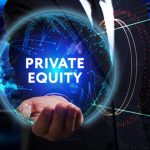Natural disasters can strike when we least expect them, and flooding is one of the most common and costly of these events. Whether you live in a high-risk flood zone or an area with minimal flood risk, having flood insurance can be a crucial safeguard. In this blog post, we’ll delve into the world of flood insurance, assess the risks, and understand the coverage it offers.
Understanding the Importance of Flood Insurance
Most homeowner’s insurance policies do not cover flood damage, making separate flood insurance critical for those living in flood-prone areas. According to the Federal Emergency Management Agency (FEMA), just one inch of flooding can cause $25,000 of damage to a home. Yet, flood insurance isn’t just for high-risk areas. Approximately 20% of flood insurance claims come from properties outside high-risk flood zones.
What is Flood Insurance?
Flood insurance covers your property and possessions if they’re damaged or destroyed by flooding. This coverage isn’t typically included in standard homeowners or renters insurance policies and must be purchased separately.
Flood insurance coverage falls into two categories:
1.Building Property Coverage: This protects the physical structure of your home and its foundation, including electrical and plumbing systems, central air and heating systems, attached bookcases, cabinets, and paneling.
2.Personal Contents Coverage: This protects personal belongings including clothing, furniture, electronics, portable appliances, and other valuables.
Assessing Your Flood Risk
The first step in assessing your flood risk is to determine your property’s flood zone. You can do this by looking at the flood maps provided by FEMA. Areas are divided into zones based on their flood risk, with high-risk zones more likely to experience a flood.
However, it’s essential to remember that even areas with low to moderate risk can still experience flooding. Changes in weather patterns, infrastructure development, and environmental factors can all contribute to flood risks.

Buying Flood Insurance
Most flood insurance is sold through the National Flood Insurance Program (NFIP), managed by FEMA. There are also private insurers offering flood insurance, which may provide higher coverage limits or different terms than the NFIP. To buy a policy, you can contact your home insurance provider or an insurance agent who deals with the NFIP.
Take note, however, that there’s usually a 30-day waiting period from the date of purchase before your policy goes into effect, so it’s best to secure coverage well before you anticipate needing it.
Floods are one of the most common and expensive natural disasters, causing thousands of dollars in damage. Having flood insurance offers peace of mind and financial protection, ensuring that you won’t have to bear the full cost of flood damage.
Understanding your flood risk and the insurance coverage available to you is a critical aspect of protecting your property. As the saying goes, “It’s better to be safe than sorry.” And when it comes to dealing with the potential of flooding, truer words were never spoken.

















